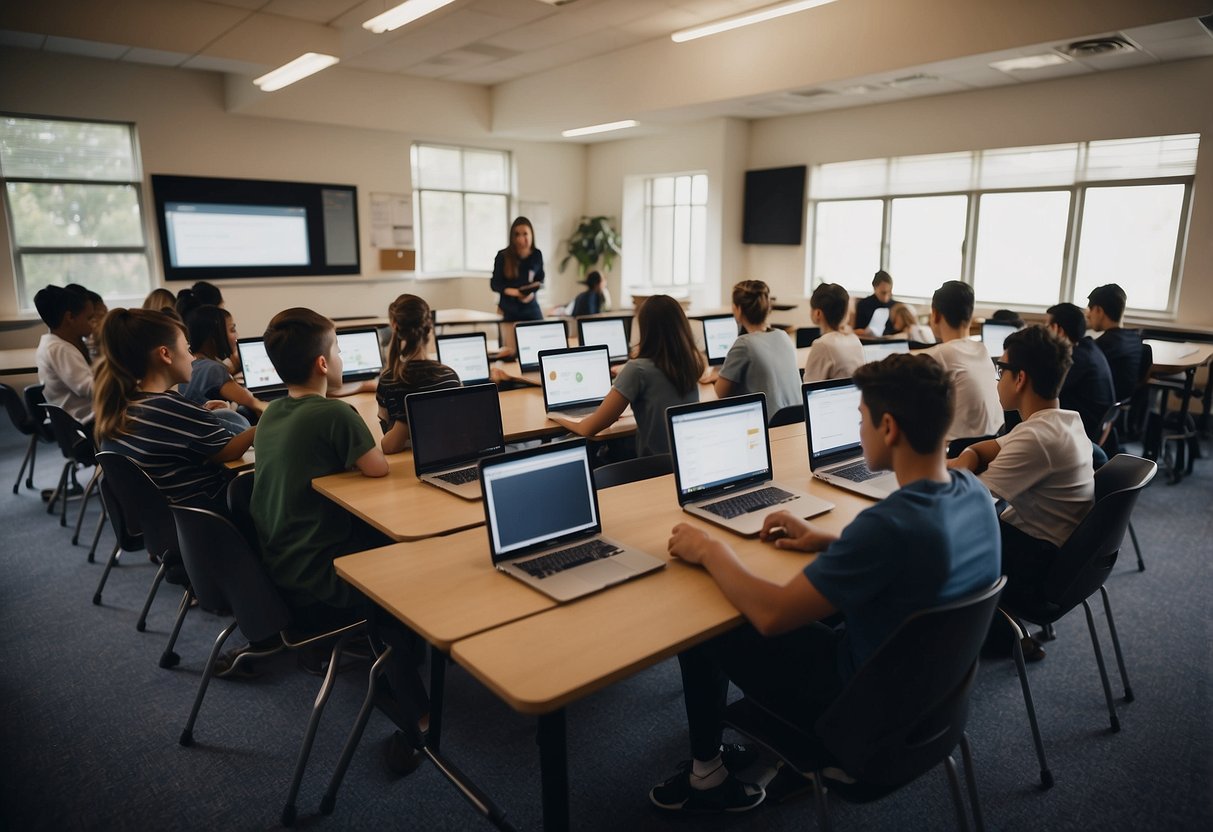
The Explosion of MOOCs and Online Tools
Massive Open Online Courses (MOOCs) have seen unprecedented growth. Platforms such as Coursera, edX, and Khan Academy offer a wide range of courses from prestigious institutions, often for free or at a low cost. This accessibility has democratized education, enabling learners from various backgrounds to improve their skills and knowledge.
Additionally, the variety of online tools has expanded significantly. Learning management systems (LMS) like Canvas and Blackboard facilitate the organization of course materials, assignments, and communication. Interactive tools like Kahoot! and Quizlet enhance engagement and make learning more interactive.
These resources have transformed traditional education methods, making lifelong learning more feasible. Whether it’s professional development or personal enrichment, MOOCs and online tools provide an invaluable resource for continued education.
Investing in Educational Quality and Access
Efforts to improve education focus on funding and policies aimed at increasing quality and accessibility, particularly in K-12 schools.
Elementary and Secondary School Emergency Funding
The Elementary and Secondary School Emergency Relief (ESSER) funding program provides financial support to K-12 schools in the United States. This funding addresses challenges such as technology gaps and safety measures.
ESSER funds enable schools to purchase new devices, upgrade internet infrastructure, and create virtual learning programs. This funding also helps in maintaining smaller class sizes for social distancing and enhancing cleaning protocols to ensure student safety.
Additional resources from ESSER help train teachers for remote instruction, ensuring that both educators and students can adapt to new learning environments. The importance of managing this funding efficiently remains critical to maximize its impact on educational quality.
Global Education Policies and Initiatives
Global education policies and initiatives strive to enhance educational quality and access. Various organizations, including UNESCO and UNICEF, initiate programs to support underprivileged regions.
These initiatives often focus on teacher training, curriculum development, and building new schools. Governments collaborate with international bodies to enact policies that provide equitable education opportunities, targeting marginalized groups like girls and children with disabilities.
Programs also incorporate modern technology into classrooms to bridge the digital divide, ensuring all students have access to current educational resources. Policy consistency and governmental commitment play key roles in the successful implementation and sustainability of these global initiatives.
Data Analysis for Understanding and Improving Student Outcomes
Modern technology plays a critical role in analyzing educational data to predict student performance and assess learning outcomes more effectively.
Predictive Analytics in Education
Predictive analytics has become an essential tool in education, providing insights into student performance and potential challenges. By examining historical data, institutions can identify patterns and trends that may indicate if a student is at risk of failing or dropping out.
These insights allow educators to intervene early, offering additional support such as tutoring or counseling. Predictive analytics also helps personalize learning experiences, tailoring content to meet individual student needs. For example, data from sources such as the Programme for International Student Assessment (PISA) can be analyzed to inform curriculum development and improve teaching strategies.
Assessing Learning with Data-Gathering
Assessing learning has evolved with the advent of data-gathering technologies, providing educators with detailed information on student progress. Various methods like online assessments, quizzes, and interactive modules collect valuable data on how well students grasp the material.
This data helps in identifying gaps in knowledge and adjusting instructional methods accordingly. Schools can also track long-term outcomes, comparing performance across different cohorts and subjects to identify strengths and weaknesses.
Innovative tools such as learning management systems (LMS) and educational software streamline data collection and analysis, making it easier to monitor and enhance student learning. Analyzing this data enables schools to continuously refine their educational approaches, ultimately leading to better student outcomes.